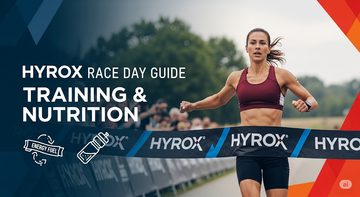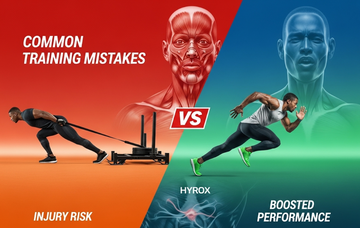Table Of Contents
What Is A High-Protein Diet
High-protein is a type of diet for the purpose of weight loss, in which enriched-protein ingredients are prioritized in meals. Increasing the protein ratio in your meal structure means reducing the ratio of the remaining two primary nutrients, carbohydrates and fats. Normally, in a high-protein diet, the protein composition will provide more than 20% of the total energy needed.
According to the dietary guidelines of the United States Department of Agriculture (USDA), the macronutrients should provide energy in the following ratio:
- 10 - 35% of the total energy provided by protein.
- 45 - 65% of the total energy provided by carbohydrates.
- 20 - 35% of the total energy provided by fat.

Protein is one of the three main nutritional components in the human diet. Studies have suggested that high-protein diets support people to lose more fat while maintaining muscle mass. Diets rich in protein help your body feel full for a long time, reduce hunger, increase metabolic rate, and preserve muscle mass.
A high-protein diet first became popular in the 1970s with the Scarsdale diet, which consisted of 43% protein, 22.5% fat, and 34.5% carbohydrates. Today’s most common protein-rich diets include the Atkins diet, the South Beach diet, and the Dukan diet.
Composition Of A High-Protein Diet
A protein-rich diet maintains three essential macronutrients: protein, fat, and carbohydrates. However, at least 20% of the total energy required comes from protein. The actual amount of protein consumed varies based on the type of high-protein diet you are taking, depending on gender, age, fitness, and activity level during the day.
You can start a high-protein diet with the following suggested macronutrient ratios: 30% of total calories come from protein, 30% of that originate from fat. Carbohydrates can provide the remaining calories. After a few weeks of practice, you can adjust your macronutrients to best suit your needs.
Foods To Eat In A High-Protein Diet
With this diet, there are no forbidden foods. But, preferring foods high in beneficial proteins and limiting refined carbohydrates, sugars and fats are recommended.
On the one hand, there are some typical foods you should eat.
- Foods high in beneficial protein include lean meats, seafood, legumes, soybeans, low-fat milk, eggs, nuts, and sprouts.
- Green leafy vegetables such as green leafy vegetables, bell peppers, mushrooms, and cruciferous vegetables.
- Fruits that are low in sugar including blueberries, strawberries, raspberries (blackberries), etc.
- Whole grains.
On the other hand, you might need to limit these stuffs, too.
- Refined carbohydrates, such as white bread, pasta, white rice, etc.
- Sugar, including candies as well as sweet spices, sweet sauces.
- Saturated fats and fried foods.
Following a high-protein diet is not difficult. If you want to start this kind of meal plan, here are a few tips:
- Kick-start your day with protein: Eggs are a protein-rich breakfast food. In case you don't have time or are not an egg lover, make a protein smoothie from whey, peas, collagen, leafy greens, and berries.
- Protein is a must for all meals: This is a high-protein diet, so protein is the key ingredient. Use foods that contain useful proteins, such as lean beef, lean chicken, or lean pork. Besides, eating plenty of vegetables is good for your health, as well.
- Do not use refined carbohydrates: Instead, include a small amount of protein-rich whole grains in your meal, such as Amaranth or quinoa.
- Side-eating with protein-rich foods: When you feel hungry between meals, eat a snack with protein-rich foods like cashews, Greek yogurt, hummus, ricotta, and cheese.
Pros And Cons Of A High Protein Diet
Pros
Adjust Levels Of Certain Weight-Regulating Hormones
Protein lowers ghrelin levels - the hunger hormone while also increasing levels of the satiety hormones GLP-1, peptide YY, and cholecystokinin. This helps reduce your calorie intake automatically.
Therefore, eating many proteins will make you feel full, less appetite, and more energized. Besides, compared to fat and starch, protein also requires the body to burn more energy to digest. This is the process needed to build muscle in the body.
Digest And Metabolize Protein To Burn Calories
After meals, some calories are used for digesting and converting foods. Studies show that dieters who consumed 25-30% of calories from lean protein lost a lot of body fat. Moreover, they significantly increased the number of calories that their bodies burned when in rest.
Prevent Muscle Loss
Muscle loss is a factor of fat burning that most people don't want. When you lose weight, muscle mass also tends to decrease. Eating plenty of protein can prevent muscle mass loss while losing weight. It can also keep your metabolic rate high, especially when combined with heavy exercise.
Cons
Nevertheless, a high-protein diet goes with a reduction in the proportions of other nutrients. That means it has limitations.
- Lack of nutrients: Without a careful selection of foods, people who practice a high-protein diet are more likely to experience nutrient deficiencies.
- Increased risk of cardiovascular disease: During a high-protein diet, if your foods are high in fat, the risk of cardiovascular disease will increase.
- Negative effects on kidney function: Protein accounts for a high proportion in the nutritional structure, which enhances pressure on kidney activities, too. That's why individuals with kidney disease should consider and consult their doctor before following a high-protein diet.
Fat Burning With Appropriate Protein Amount
"Many people are not able to control their diets and consume too much protein," said Marion Nestle, professor of nutritional food research and public health at New York University.
Normally, protein and fat coexist in the food. Several studies reveal that consuming the majority of protein may have a higher risk of high bad cholesterol and even some cardiovascular diseases.
Even if you are a vegetarian, your body can get protein from vegetables, whole grains, and legumes. It's important to avoid your protein intake from being too high. Hence, prepare yourself a quality breakfast and limit your protein intake at lunch and dinner.
Depending on your body weight and intensity of daily physical activities, the protein amount needed is also different. For example, for people who exercise vigorously, the required protein amount is higher than normal as they'll need to increase muscle.
According to research by nutrition experts, you should consume fewer calories than the body dissipates to lose weight.
In this research, it is possible to calculate the protein amount with calorie percentage. To improve weight loss efficiency, you only need to aim 25-35% of calories from the protein amount you consume. In other words, you can find the number of grams of protein you should take by multiplying your calories by 0.075. For instance, on a 2,000-calorie diet, you would eat 2,000 x 0.075 = 150 grams of protein.
However, these numbers do not have to be accurate. You can choose the amount you like, just within 25-35% of calories, to be effective. In the opinion of USDA, for a mature person, the recommended dietary allowance (RDA) for protein is 0.8g/kg of body weight daily.
Related Articles:










